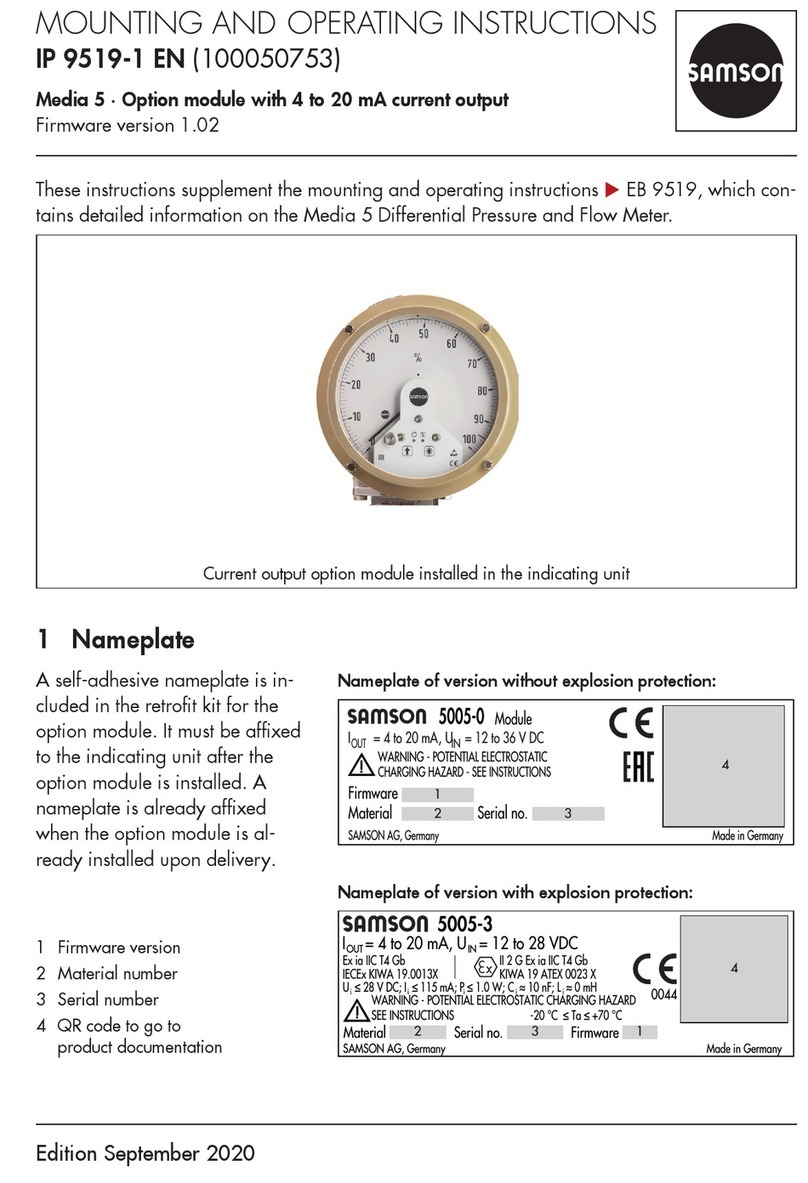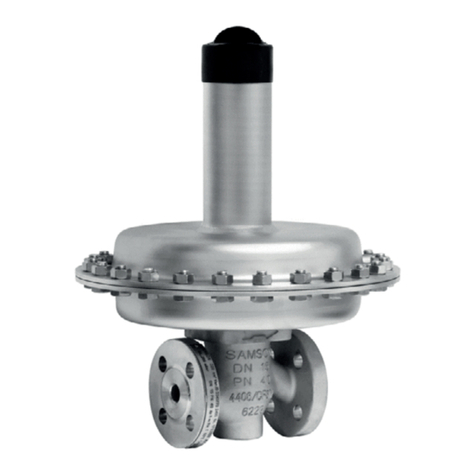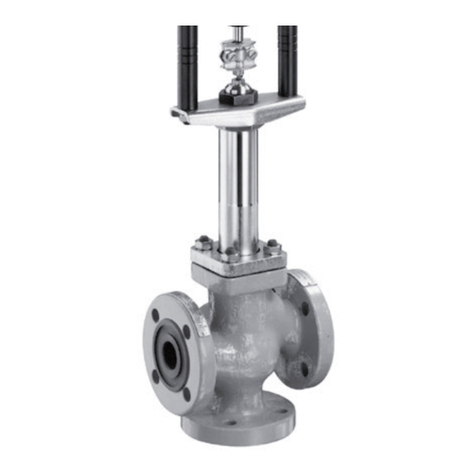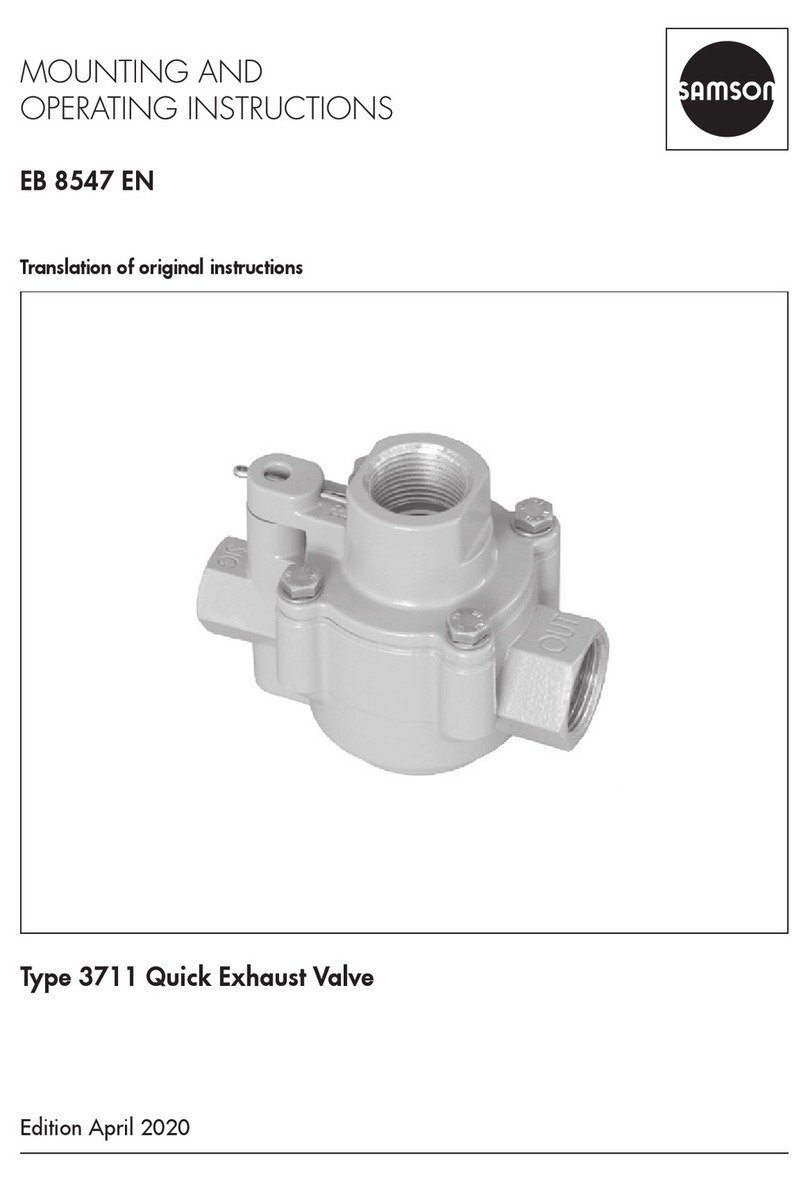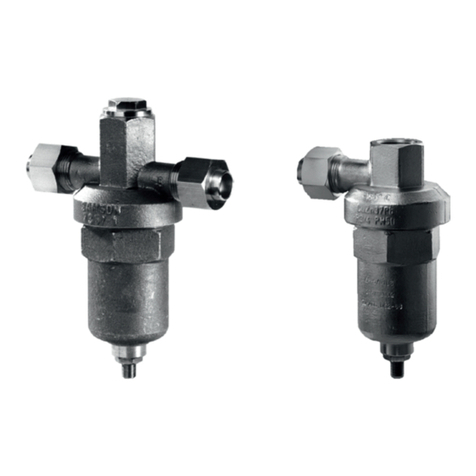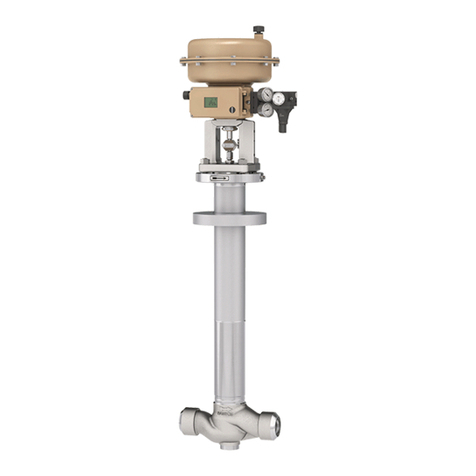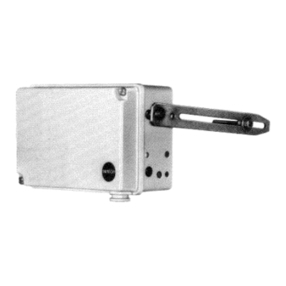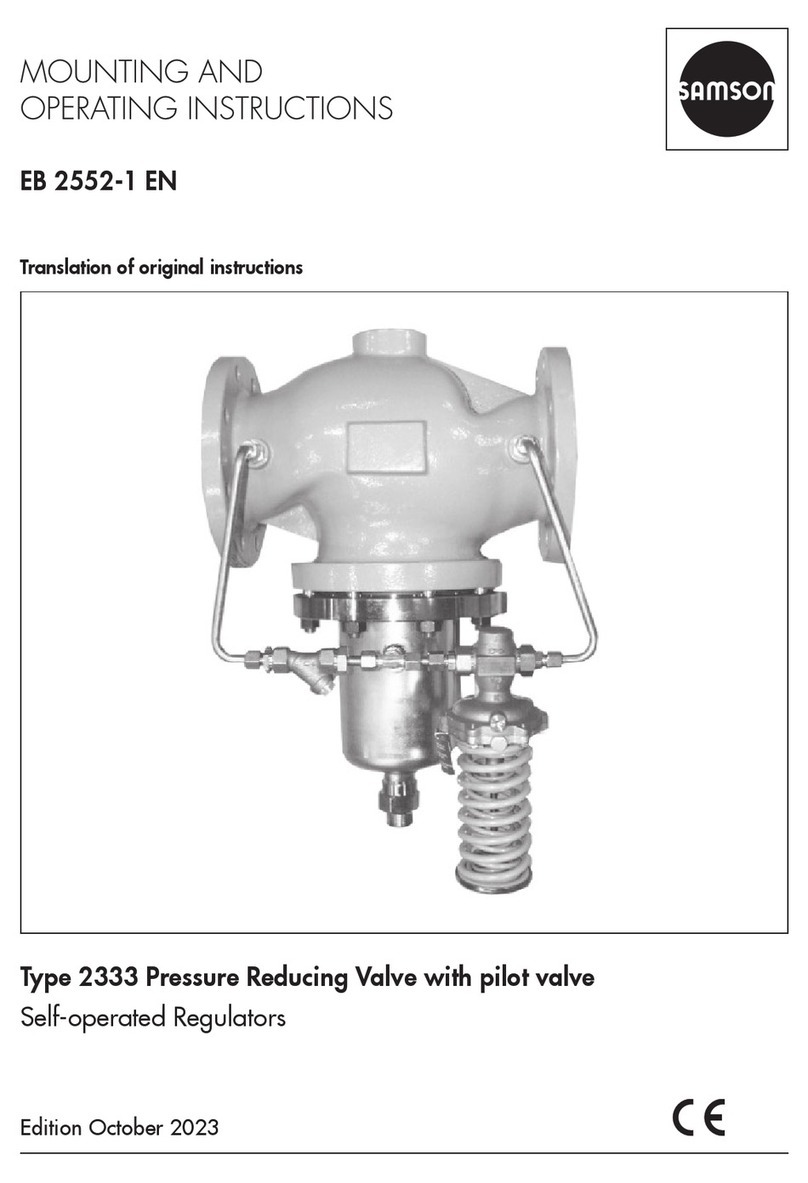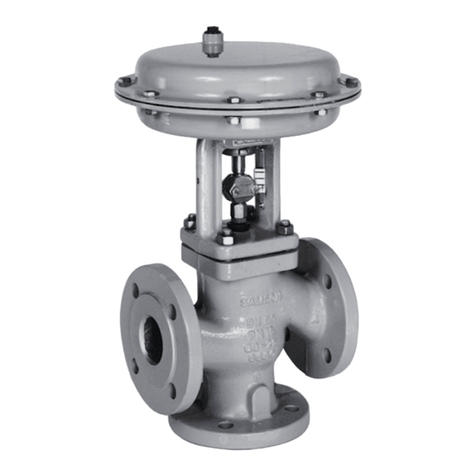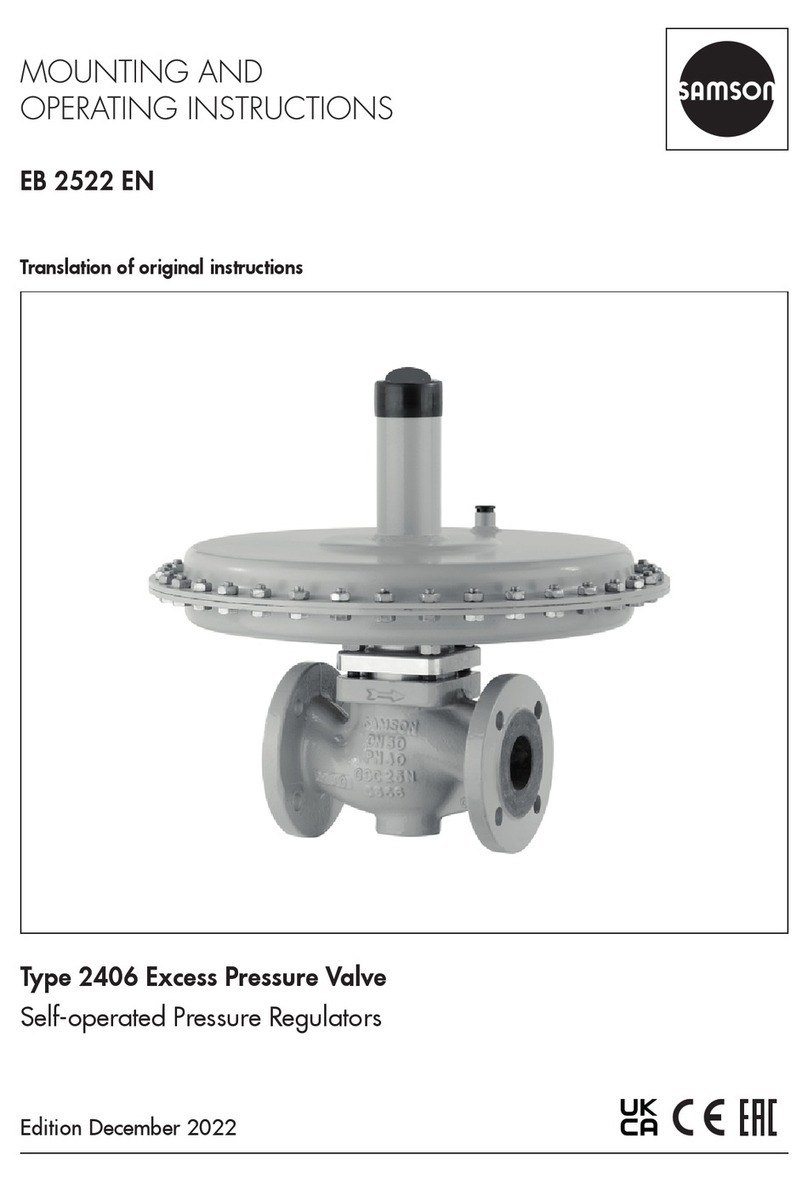
6 EB 8257 EN
Safety instructions and measures
Personal protective equipment
We recommend wearing the following protective equipment depending on the process
medium:
−Protective clothing, gloves, and eyewear in applications with hot, cold, and/or corrosive
media
−Wear hearing protection when working near the valve.
ÎCheck with the plant operator for details on further protective equipment.
Revisions and other modications
Revisions, conversions or other modications to the product are not authorized by SAMSON.
They are performed at the user's own risk and may lead to safety hazards, for example.
Furthermore, the product may no longer meet the requirements for its intended use.
Safety devices
Upon supply air or control signal failure, the valve moves to its fail-safe position (see sec-
tion3.1). The fail-safe action of the actuator is the same as its direction of action and is spec-
ied on the nameplate of SAMSON actuators (see actuator documentation).
Warning against residual hazards
To avoid personal injury or property damage, plant operators and operating personnel must
prevent hazards that could be caused in the control valve by the process medium, the
operating pressure, the signal pressure or by moving parts by taking appropriate
precautions. They must observe all hazard statements, warning and caution notes in these
mounting and operating instructions, especially for installation, start-up, and service work.
Responsibilities of the operator
The operator is responsible for proper operation and compliance with the safety regulations.
Operators are obliged to provide these mounting and operating instructions as well as the
referenced documents to the operating personnel and to instruct them in proper operation.
Furthermore, the operator must ensure that operating personnel or third persons are not ex-
posed to any danger.
Responsibilities of operating personnel
Operating personnel must read and understand these mounting and operating instructions as
well as the referenced documents and observe the hazard statements, warning and caution
notes specied in them. Furthermore, the operating personnel must be familiar with the ap-
plicable health, safety and accident prevention regulations and comply with them.

